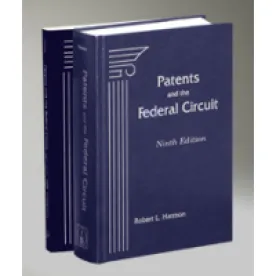In a case that hinged on the construction of a disputed claim term, the US Court of Appeals for the Federal Circuit explained that the district court erred in limiting the disputed claim based on the preferred embodiment and other intrinsic evidence. Cont’l Circuits LLC v. Intel Corp., Case No. 18-1076 (Fed. Cir. Feb. 8, 2019) (Lourie, J).
Continental Circuits sued Intel Corp and Intel’s supplier, alleging infringement of four related patents directed to a multilayer electrical device having a tooth structure and methods for making the same. The parties disputed the proper construction of the terms “surface,” “removal” and “etching” of “a dielectric material” or “epoxy.” A determination of whether the accused devices infringed depended on resolving whether these disputed claim terms should be limited to a “double desmear process.”
The district court construed the disputed terms to require that “surface,” “removal” or “etching” of the dielectric material be “produced by a repeated desmear process.” The district court found that Intel “met the exacting standard required” to read a limitation into the claims, and that the prosecution history, in which Continental submitted an expert declaration to overcome indefiniteness and written description rejections, corroborated the court’s construction. The district court found that the declaration’s explanation that the specification-disclosed “etching” process uses “two separate swell and etch steps” as “a technique which forms the teeth” “clearly describe[d] the patented method as involving two etching processes.” The district court also found that extrinsic documents produced by the inventors stating the use of a “two pass desmear cycle” and “a double pass desmear to achieve the tooth structure” provided “helpful corroboration,” although they were “not reliable enough to be dipositive.” Based on the district court’s construction, the parties stipulated noninfringement, and the court entered judgment. Continental appealed.
On appeal, Continental argued that the plain language of the claims did not include a repeated desmear process and the specification did not clearly and unmistakably limit the claims to require a repeated desmear process. Continental argued that even if the preferred process discussed a repeated process, it was improper to limit the claims to the preferred embodiment since the expert declaration did not include a clear and unmistakable disavowal for prosecution disclaimer purposes and the inventor documents merely reflected the inventors practicing the preferred embodiment. Intel argued that the patentees repeatedly disparaged and expressly disavowed the single desmear process and expressly defined “the present invention” as requiring a repeated desmear process. Intel also argued that the expert declaration reiterated that “the claimed invention is directed to surface roughening performed by ‘two separate’ passes of a desmear process” and that the inventor documents demonstrated an inability to obtain the desired levels of roughening using a single-pass desmear process.
The Federal Circuit concluded that the district court erred in limiting the claims. The Court began with the observation that none of the asserted claims recited a “repeated desmear process” and thus were not so limited based on the plain language. The Court also concluded that none of the specification statements relied upon by the district court rose to the level of “a clear and unmistakable disclaimer” or “expressions of manifest exclusion or restriction, representing a clear disavowal of claim scope,” citing to phrases such as “[o]ne technique,” “can be carried out,” “for example” and “a way of.” Given that one goal of the specification is to provide a best mode, and Federal Circuit case law that holds that even when the specification describes only a single embodiment, the claims will not be read restrictively absent a clear intention to limit claim scope, the Court viewed these phrases from the specification as simply one method to make the invention. Similarly, arguments distinguishing double desmear as “contrary to” or “in stark contrast” to single desmear were not considered clear and unmistakable limiting statements, since “[m]ere criticism of a particular embodiment” is not clear disavowal of claim scope.
The Federal Circuit further found that “[a] novel product that meets the criteria of patentability is not limited to the process by which it was made.” The Court found that to read a process limitation into a product claim, the patentee must have “made clear that the process steps are an essential part of the claimed invention.” The Court found that the repeated desmear process was not “an essential part” of the claimed electric device having a tooth structure, but instead expressed a preference or comparison with prior art techniques. Thus, concluding that the specification and statements revealed preferred, non-limiting embodiments, the Court vacated the district court’s construction and remanded for further proceedings.



 />i
/>i

